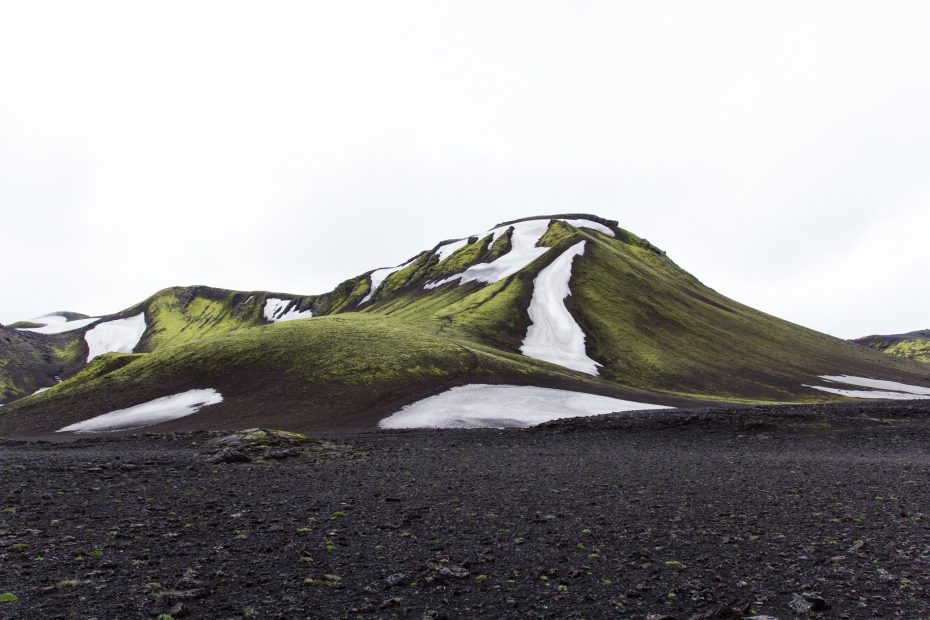” plokkfiskur is a hearty fish stew. It combines boiled fresh whitefish, potatoes, and onion mashed together and topped with butter. The potatoes thicken the creamy chowder-like base while the butter provides richness. The light sweetness of the fish balances the starchy earthiness of the potatoes.
Table of Contents
Þorramatur
Þorramatur refers to a buffet of classic Icelandic winter fare, served around the ancient month of þorri in January as a nod to days before refrigeration. The spread includes cured, fermented, and dried delicacies like smoked lamb, singed sheep heads, fermented shark, sour ram testicles, dried fish, blood pudding, and whale blubber cured in whey—a real feast for the adventurous.
Skúffukaka
This baked chocolate cake is so beloved it became Iceland’s contribution to the world of cakes. Meaning “oven cake,” the decadent dessert features layers of airy chocolate cake interlaced with chocolate buttercream frosting. Cocoa only came to Iceland in the early 20th century, but skúffukaka quickly become a treasured indulgence.
Brauðterta
Brauðterta translates to “bread cake,” though it scarcely resembles bread. To make it, bakers press thin layers of rye bread with butter and jam atop each other into a tall cake shape, then frost the exterior. This transforms humble ingredients into an impressive and delicious layered dessert.
What Makes Icelandic Food Unique?
With its remote location far from mainland Europe, several key factors give Icelandic cuisine its singular identity.
Firstly, rye bread is a cornerstone. The island’s lack of productive wheat fields made wheat expensive, so barley and rye have long been staples. Icelanders pride themselves on their hearty rye bread, even celebrating an annual holiday called Bolludagur (Bun Day) preceding Lent. Dense rye breads accompany most meals.
Secondly, butter livens up Iceland’s grain-based fare. With grass-fed dairy herds yielding high quality milk, Icelanders churn delicious butter, which gets spread liberally on bread and added to dishes. Its richness balances rye’s austerity.
The third uniqueness comes from Iceland’s sparse and seasonally limited produce. Foraged wild berries like crowberries and blueberries add welcome pops of sweetness in warmer months, while residents make the most of cultivated root vegetables and brassicas during the long winters. Such constraints spark creativity in the kitchen.
Lastly, Icelanders have strong traditions of foraging wild ingredients like mushrooms and seaweed. These gifts from the land and sea diversify dishes with unique flavors and textures. Residents take pride in sourcing food from their surrounding bountiful wilderness.
Dining Culture: Gathering Around the Table
Beyond the food itself, Icelandic dining culture cultivates a warm sense of community. Gathering for coffee and pastries is a cherished social ritual. Restaurants serve generous portions of fish and meat meant for sharing family-style, accompanied by lively conversation. The long summer days find friends grilling outdoors at all hours, soaking up the precious midnight sun over a glass of brennivín schnapps.
Mealtimes provide comfort and joy during long winter nights as well. Cozying up to steaming soups or rich stews offers literal and symbolic sustenance until spring. However Icelanders gather around the table, the emphasis is on savoring both human connections and the gifts of nature that sustain them.
Conclusion
From singed sheep heads to butter-laden rye bread, the traditional foods of Iceland reflect the singular climate and history of this remote North Atlantic island. While contemporary cuisine in Reykjavik and beyond incorporates wider influences, chefs remain dedicated to Iceland’s natural bounty. Much of the diet centers around fish, lamb, and dairy enriched with foraged herbs and berries from the wild landscape. Whether sampling fermented shark or smoked lamb, the adventurous eater can discover the resilience and creativity encoded in Iceland’s unique cuisine. The flavors tell an edible story of this remarkable culture.
Frequently Asked Questions about Icelandic Cuisine
What are some traditional Icelandic foods besides fish?
Two other iconic Icelandic foods are skyr, a thick cultured dairy product similar to yogurt, and rye bread. Icelanders eat rye bread with most meals and also enjoy porridges made from whole grain oats and barley. Lamb and mutton are other traditional proteins, often cured or smoked.
Does traditional Icelandic food seem odd to outsiders? Why?
Yes, some traditional dishes like fermented shark, singed sheep heads, and ram testicles seem exotic or even unpalatable to outsiders. But these foods evolved to make use of the limited ingredients available in Iceland’s rugged environment before modern transportation and refrigeration. What may seem odd today was ingenious in the past.
How has Iceland’s cuisine changed and evolved over time?
While traditional foods are still popular, Iceland’s cuisine keeps evolving. Imports and modern supermarkets provide more variety now. Chefs fuse global and local ingredients using modern culinary techniques. And contemporary trends like New Nordic cuisine influence menus. But pride in Iceland’s natural bounty and culinary traditions remains strong.
What are some uniquely Icelandic desserts worth trying?
Two sweet treats showcase Iceland’s creative flair. Skúffukaka is a chocolate layered cake with an airy texture. Brauðterta or “bread cake” improbably transforms bread, butter, and jam into a tall, frosted dessert. Icelanders are also passionate about their excellent dairy, so any cake or cream topping made with fresh butter or skyr is worth savoring.
Where can someone sample traditional Icelandic dishes?
Reykjavik has many restaurants featuring Iceland’s culinary heritage, like Café Loki, Fjörubarinn, and Matur og Drykkur. Dill Restaurant creatively elevates New Nordic fare. Outside the capital, food festivals like þorrablót and village buffets offer immersion in Iceland’s singular food culture. Year-round, brave souls can try fermented shark at places like Bjarnarhöfn shark museum.
